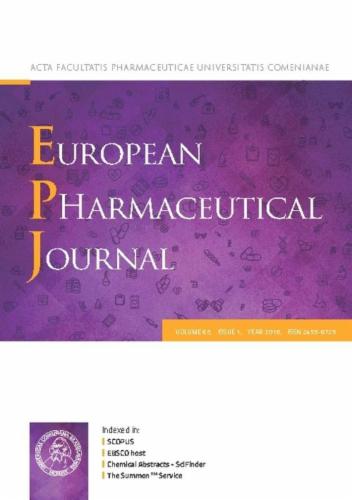Enhancement of the in vitro anti-leukemic effect of the histone deacetylase inhibitor romidepsin using Poly-(D, L-lactide-co-glycolide) nanoparticles as a drug carrier
IF 4.3
3区 医学
Q1 PHARMACOLOGY & PHARMACY
引用次数: 0
Abstract
The goal of this work is to develop a delivery system for histone deacetylase inhibitor (HDACi) romidepsin (ROM) using Poly(D, L-lactide-co-glycolide) as a carrier and evaluate its anti-leukemic effects. Romidepsin-loaded nanoparticles (ROM NPs) required for this purpose were fabricated using a single emulsion-solvent evaporation technique. Their physical characteristics and in vitro drug release profiles were studied, alongside biocompatibility and hemocompatibility assessments. Cell viability assays and Annexin V/Propidium Iodide (PI) staining were conducted to evaluate the anti-leukemic and apoptosis induction efficiency of ROM NPs in vitro. ROM NPs displayed a spherical shape with an average hydrodynamic size of about 149.7 ± 8.4 nm, a PDI of 0.11 ± 0.03, and a zeta potential of -25.27 ± 2.12 mV. The nanoparticles demonstrated a high encapsulation efficiency of ROM (∼93 %) and these nanoparticles effectively entered acute leukemia cells, including U937 and Jurkat. ROM NPs also exhibited a prolonged biphasic release pattern, specifically, the initial burst release phase occurred within the first 24 h, followed by a slower, sustained release. Additionally, they showed no hematological or biological toxicity, indicating their potential use for the delivery of anti-cancer drugs through the circulatory system. In tests on acute leukemia cell lines, ROM NPs showed significantly stronger anti-leukemic effects and induced apoptosis to a greater extent compared to free ROM. In summary, ROM NPs represent a promising therapy option for leukemia according to their enhanced anti-leukemic effects. Further modification of this strategy could be performed to enable target specificity, hence minimizing damage to normal cells.

求助全文
约1分钟内获得全文
求助全文
来源期刊
CiteScore
9.60
自引率
2.20%
发文量
248
审稿时长
50 days
期刊介绍:
The journal publishes research articles, review articles and scientific commentaries on all aspects of the pharmaceutical sciences with emphasis on conceptual novelty and scientific quality. The Editors welcome articles in this multidisciplinary field, with a focus on topics relevant for drug discovery and development.
More specifically, the Journal publishes reports on medicinal chemistry, pharmacology, drug absorption and metabolism, pharmacokinetics and pharmacodynamics, pharmaceutical and biomedical analysis, drug delivery (including gene delivery), drug targeting, pharmaceutical technology, pharmaceutical biotechnology and clinical drug evaluation. The journal will typically not give priority to manuscripts focusing primarily on organic synthesis, natural products, adaptation of analytical approaches, or discussions pertaining to drug policy making.
Scientific commentaries and review articles are generally by invitation only or by consent of the Editors. Proceedings of scientific meetings may be published as special issues or supplements to the Journal.

 求助内容:
求助内容: 应助结果提醒方式:
应助结果提醒方式:


